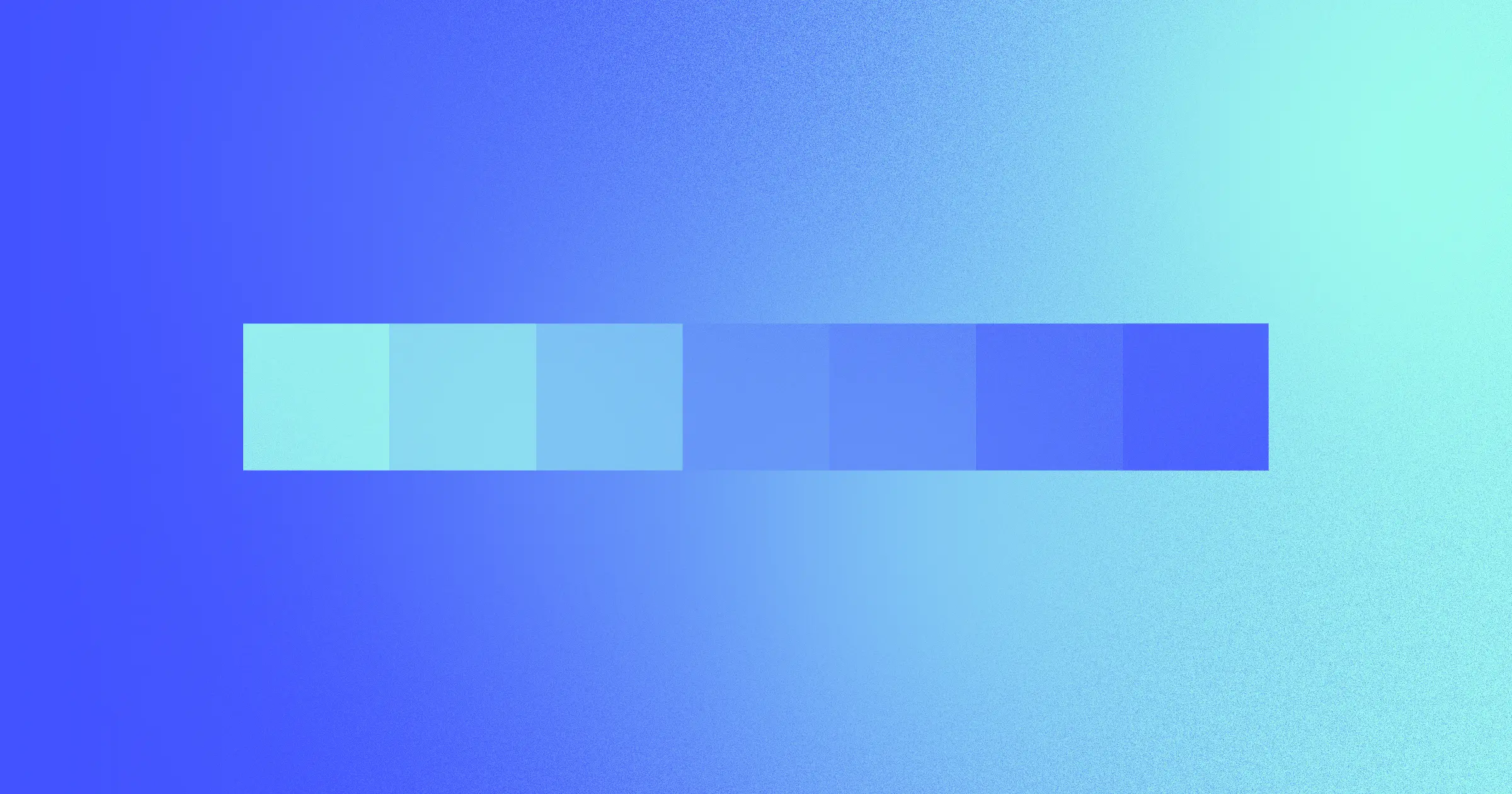Capable of associating meaning and evoking profound emotion, color is key to building an effective brand identity. Here are 12 color combinations to consider for your brand’s color palette.
Color is incredible. This commonly shared cognitive experience of interpreting wavelengths of reflected light and assigning it to the perceived illusions that is what we call color is, well, mind-blowing. And when you consider that color can have universal associations that influence our perceptions and understandings over millennia – you can’t tell us that color isn’t one of the most fascinating human constructs, apart from time.
Consider that red isn’t hot. Blue isn’t cold. Brown isn’t cozy, and green isn’t earthy. If anything, these colors are merely combinations of hex codes that only bear meaning to those who aren’t visually impaired. It’s the association with meaning, however, that is the power behind color. When wielded with keen intentionality, color can be an incredible visual tool to convey emotion, create meaning, and subconsciously appeal to an audience.
Before harnessing the power of color for your business’s branding, however, we have to take a quick detour into color psychology and theory. Go on, get your notebook.
Understanding business color schemes
Color is a powerful device capable of evoking emotions, influencing behavior, and communicating meaning. Color psychology studies how color affects our thoughts, feelings, and behaviors; color theory focuses on how color combinations work together and affect our perception.
Color psychology
Color psychology studies how colors affect our thoughts, feelings, and behaviors based on the idea that different colors evoke different emotions and associations. For example, we often associate red with excitement, passion, and danger, while we associate blue with trustworthiness, reliability, and calmness. Breaking Bad was excellent at using color to set atmospheres, associate meanings, and establish moods throughout the series.
Color theory
Color theory studies how colors work together and affect our perception based on the three primary colors: red, yellow, and blue. As we learned in primary or elementary school, these colors combine to create all the secondary colors we know and love.
Color theory can also be used to create different color schemes: monochromatic, analogous, complementary, or triadic.
- Monochromatic — A monochromatic color scheme uses different shades and tints of the same color. This type of color scheme is simple and elegant, perfect for a more unified and cohesive look. For example, a business that sells minimalist or high-end products might use a monochromatic color scheme of black and white. Monochromatic schemes are seen in brands like Apple (black & white), Chanel (black & white), and Tiffany & Co (turquoise).
- Analogous — An analogous color scheme uses colors next to each other on the color wheel. This color scheme is harmonious and pleasing to the eye, ideal for creating a sense of balance and tranquility. For example, a business that sells organic products might use an analogous color scheme of green, yellow, and orange. Analogous schemes are seen in brands like Mastercard (red & orange) and Instagram (gradient yellow, orange, red, purple, blue).
- Complementary — A complementary color scheme uses colors opposite each other on the color wheel. This type of color scheme is bold and eye-catching, creating a sense of energy and excitement. For example, a business that sells fitness products might use a complementary color scheme of blue and orange. Complementary schemes are seen in brands like McDonald’s (red & bright yellow), Pepsi (red, white & blue), and Coca-Cola (red & white).
- Triadic — A triadic color scheme uses three colors evenly spaced around the color wheel. This type of color scheme is vibrant and dynamic, perfect for creating a visually appealing and engaging look. For example, a business that sells children's toys might use a triadic color scheme of red, yellow, and blue. Triadic schemes are seen in brands like BMW (blue, white & black) and Google (red, yellow & blue).
Designers use these color schemes as color palettes for various design and marketing needs; your color scheme is a framework for choosing colors that are compatible, unified, and cohesive, while your color palette, or brand palette, is the specific set of color combinations you use across brand designs.
Choosing your business’ color scheme and palette
For businesses, choosing your color scheme and palette is key to creating those initial appeals to any particular audience. Color can construct a stronger brand personality that’s both influential and emotive. Keep in mind when choosing a color scheme and palette for your business, however, it is vital to first consider your brand identity, industry/sector, and target audience, including the overall tone you wish to convey.
- Consider your brand identity. What are your business’s core values and mission? What image are you seeking to project to your target audience?
- Consider your industry and competitors. What’s the industry standard, and how do you differentiate yourself from the competitors?
- Research your target audience. What colors are they likely to be drawn to? What emotions do you want them to feel when they see your business’s branding?
- Adhere to principles of color theory. Choose one color scheme as a framework to create the various color combinations. These combinations will make up your brand palette.
It’s worth doing more research on color psychology and theory before honing in on just any color combination. Truly evaluate the schemes and palettes that best align your business, audience, and industry to your desired messaging — leverage resources like ChatGPT or Google Bard if you need inspiration.
So, with everything sorted, let’s check out some modern business color palettes in action.
12 best business color combinations
From warm colors, cool colors, neutral colors, and pastels, here are 12 modern business color combinations to consider for your brand colors.
1. Olive green and peach

This complementary color combination presents balances cool and warm, a look ideal for health and wellness brands seeking to convey a welcoming, attractive look and feel.
Hex codes: #556B2F, #FFDAB9
2. Plum and taupe

Together, plum and taupe create a rich analogous color combination ideal for businesses within the luxury goods and services niche. Plum’s deep, rich tone can signify relaxation and luxury, while taupe adds a touch of earthy neutrality, evoking a further sense of serenity.
Hex codes: #8E4585, #483C32
3. Mustard yellow and navy blue

This complementary color combination is an absolute classic. Mustard yellow and navy blue come together to create a nautical aesthetic ideal for travel, marine, and outdoor businesses.
Hex codes: #FFDB58, #154360
4. Teal and gray

For those looking for a more relaxed yet sophisticated color combination, teal and gray present a beautiful analogous color scheme ideal for industries looking to convey trust and expertise, particularly finance, law, and consulting.
Hex codes: #008080, #808080
5. Deep purple and goldenrod

Reminiscent of rich wine hues and vineyards, deep purple and goldenrod are an ideal color combination for wineries, high-end businesses in hospitality industries like hotels and restaurants, and wellness industries like spas, meditation centers, and yoga studios.
Hex codes: #800080, #DAA520
6. Mint green and light pink

Mint green and light pink together create a color combination that feels delicate and dreamy. This complementary color combination is excellent for businesses seeking to evoke a more feminine aesthetic, particularly in the fashion, beauty, and lifestyle industries.
Hex codes: #AAFFC3, #FFC0CB



















Get started for free
Create custom, scalable websites — without writing code. Start building in Webflow.
7. Royal blue, lemon yellow, and gray

For startups looking for a color palette that communicates trust while conveying excitement and balance, royal blue, lemon yellow, and gray is the complementary color combination for you.
Hex codes: #4169E1, #FFF44F, #808080
8. Burnt orange, terracotta, and cream

One of my favorite color combinations, burnt orange, terracotta, and cream is ideal for almost any industry. These analogous colors are so warm and welcoming, yet exciting at the same time.
Hex codes: #CC5500, #E2725B, #FFFFF0
9. Navy blue, cobalt blue, and white

Modern and sophisticated navy blue, cobalt blue, and white are ideal for tech, finance, or consulting businesses. The blues are deep and contemporary, communicating firm trustworthiness with the white, furthering the balance of this beautiful color palette.
Hex codes: #000080, #0000FF, and #FFFFFF
10. Sky blue, lavender and white

This soft, pastel color combination conveys an idea of playful romance and femininity, making it an ideal choice for businesses in the wedding and even childcare industries.
Hex codes: #87CEFA, #E6E6FA, and #FFFFFF
11. Beige, brown and cream

Similar to burnt orange, terracotta, and cream, beige, brown, and cream is a warm, creamy analogous color combination. More neutral than the prior combination, these colors are ideal for the agriculture, wellness, and sustainability industries.
Hex codes: #F5F5DC, #654321, and #FFFFF0
12. Slate gray, blush pink and mauve

Soft and sophisticated, these more muted pastels come together to create a calming, elegant atmosphere, perfect for nail salons and boutiques looking to stand out without too much unnecessary flare.
Hex codes: #708090, #FFB6C1, #E0B0FF
Where to use your business’ color palette
With color psychology and theory mastered, it’s time to wield your mighty, new, colorful sword and put this knowledge to work. It’s time for application. Let’s start with the overarching question: where and how should businesses use color to appeal to their target audience?
Well, first consider your sector, are you B2B or B2C? Next, are you selling a product or service? These questions dictate the various touchpoints and materials you’ll need to consider to reinforce your brand identity effectively, create a memorable visual experience, and appeal to your target audience. This list will vary depending on your market and industry; nevertheless, the most common touchpoints and materials comprise:
- Logo colors — Your logo design is the cornerstone of your brand's visual identity, so you should feature your color palette prominently in your logo, ensuring immediate recognition and association with your brand.
- Website design — Apply your color scheme to your website’s background, navigation bars, buttons, and links. Color can properly contrast text and background colors for readability and highlight important elements, like call-to-action buttons with accent colors.
- Marketing materials (printed and digital) — Includes brochures, flyers, and business cards to ensure brand consistency.
- Product packaging — If your business sells physical products, include your color palette in your product’s packaging design.
- Social media — Customize your social media profiles with brand colors, including profile images, cover photos, and post graphics.
If you have a brand kit or brand design guide, include it in your guidelines to ensure consistency, as consistency is key to building brand recognition and reinforcing those emotional connections. Create templates for each touchpoint and material for future applications.
Additionally, consider the context in which you're using colors. Consider how you can better employ your main colors and accent colors to visually appeal to your audience across these touchpoints while maintaining the core brand identity. Test and adapt your brand palette across various touchpoints and materials.
Tip: Ask ChatGPT or Google Bard to provide a complete list of material and touchpoints specific to your business. Use the prompt, “What are all the various touchpoints and materials to consider for a (insert business type)’s branding?”
Beautiful modern business color palettes
So, that’s our list; 12 business color combinations great for any modern business. If none of the above-mentioned colors capture the look and feel of your brand, check out a color palette generator. Once you've found the perfect colors, it's time to get started in Webflow. Start creating your website or designing your brand with your new color palette.

Get started for free
Create custom, scalable websites — without writing code. Start building in Webflow.































